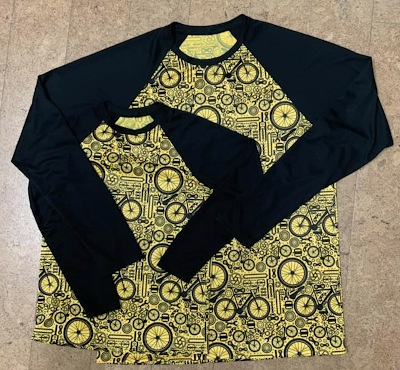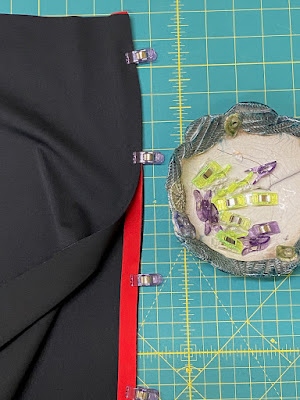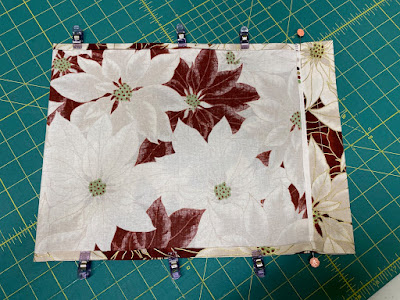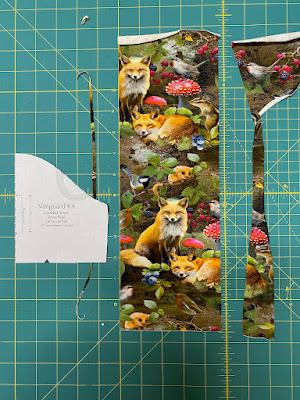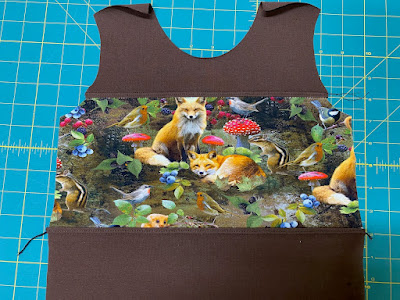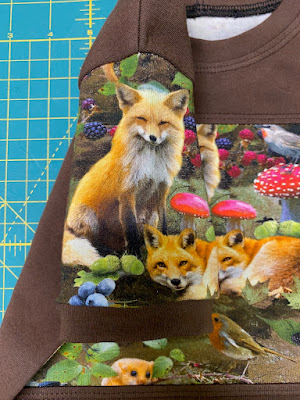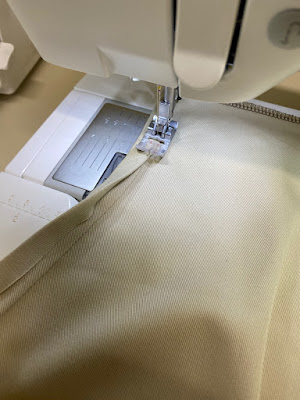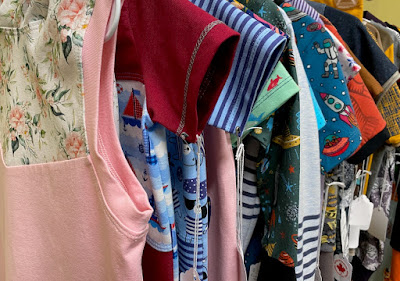I started sewing clothes in earnest when my grandkids came on the scene 10 years ago. At that time, it was strictly cotton knits that I was using while I was learning my way around garment sewing and how to sew with knits. Eventually I started to get more brave and began thinking that I'd like to make some outer wear - but where on earth would I find the fabric? Certainly not at my local fabric store!
So the online searches began and I kept coming across the name Discovery Trekking Outfitters - and holy cow - they were actually Canadian and not that far from me! They sold active wear, but they also sold the fabric!
I think my first purchase included Solar Stretch and I made a golf shirt for my husband (Love Notions Dockside) - which he still loves and wears - and which still gets compliments for the super fabric pattern.
I got some for me as well and made a top (Love Notions Forte) to wear to a Valentine's party - the young hostess insisted that we wear red which is not a colour I feel comfortable in, but the gorgeous Poppies pattern had lots of colours, including the compulsory red.
Okay - I was hooked! So we had to take a drive up Vancouver Island to see where all this marvellous fabric came from. And I met Polartec Windpro Stretch in the most gorgeous brown. I didn't buy it at that visit, but when it came to testing a coat pattern, I knew exactly what I wanted to make my final test with!
I found the fabric a dream to work with - cuts like butter and sews up a dream! It's warm but not heavy and perfect for our west coast winters. AND it's water repellant! This is Love Notions Octave Coat
I've since used it many times - warm winter pants (Love Notions Moto Maxx) for my grandson and most recently a hoodie which was part of his Christmas present -
he immediately put it on and has been wearing it constantly ever since! (Love Notions Samson Hoodie) My grandson is super picky about his clothes! No more cute patterns on his fabric - he wants fabrics that work with his active lifestyle and that are comfortable to wear and he's not shy about naming the fabrics he wants.
Discovery is constantly researching and offering new fabrics. This year, they brought in a wicking fabric they're calling Coolfab and had some of it printed. When I saw the sample with bicycle parts on it, I knew exactly what my mountain biking enthusiast son and grandson would be getting for Christmas - father and son cycling shirts! (Jalie Nico)
Discovery doesn't just carry athletic fabrics - they also carry natural fibre fabrics and their bamboo products are a huge favourite of mine!
Take this dolman top with a cowl neck - bamboo terry and soooo comfortable! (Love Notions La Bella Donna)
Or this bamboo fleece robe (Love Notions Compose Robe) And now my granddaughter is getting into the act - asking for solid colours in the bamboo family.
Her most recent request was for bamboo terry tops and so I made her these. (Love Notions L'il LDT, Sloane and La Bella Donna)
I think you get the idea about how much I love their fabrics - but how about the people behind them?
Leslie and her staff are unfailingly helpful, kind and efficient. If you have questions about their fabrics, they get back to you so quickly. There are numerous videos which might walk you through the store, tell you the properties of the various fabrics, and introduce you to sewing techniques that will make your project work more easily. I simply can't say enough nice things about them!
And just because they're in Canada, don't think that's where they only sell - they ship internationally.
Discovery Fabrics is my favourite place to shop for fabrics and I have absolutely no hesitation in recommending them.





